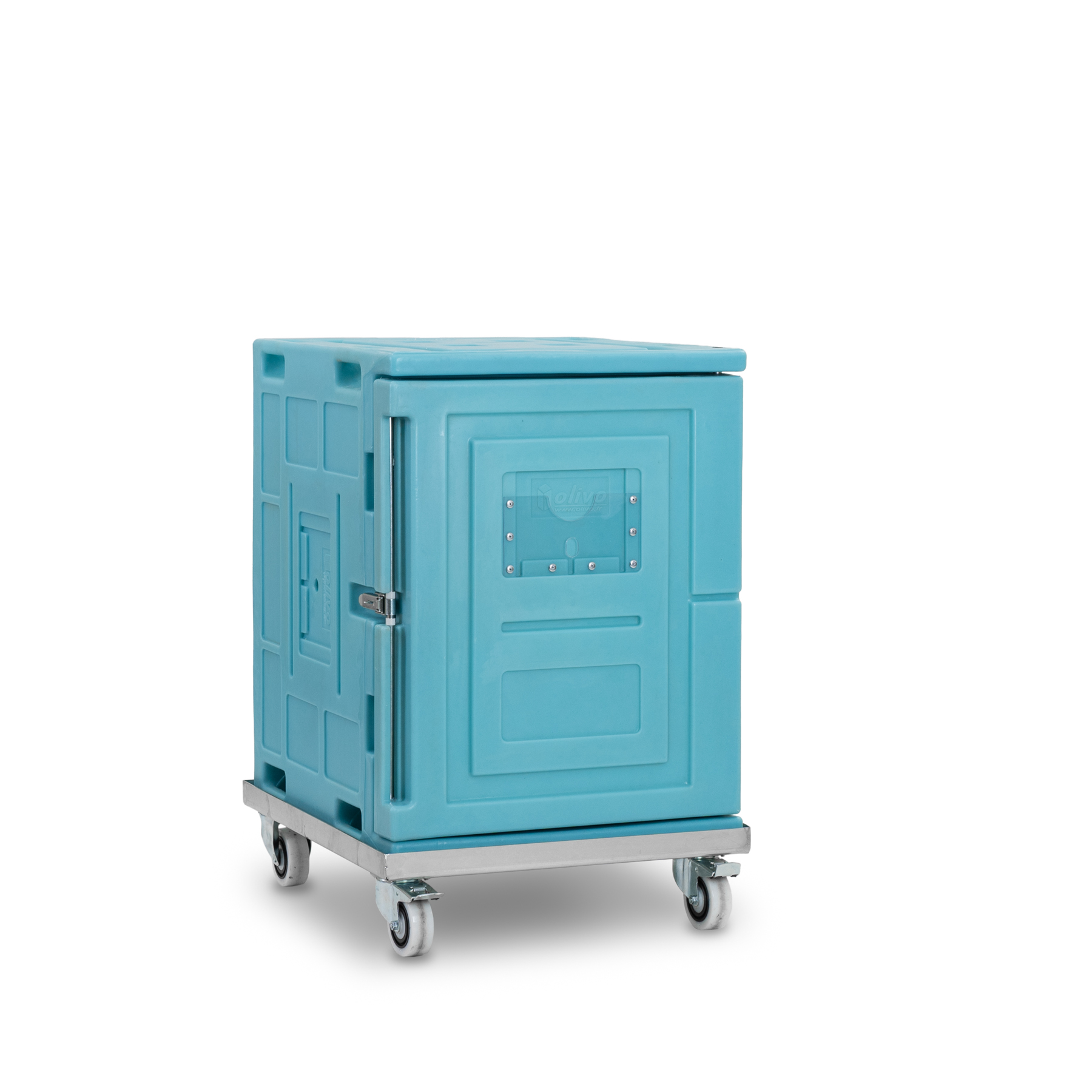
Ext. dim. : 600 x 715 x 800 mm,
Volume : 138 L,
Cold source : eutectic plate TOP 130,
Compatible format : Roll cage,
View detailsIsothermy is the constant maintenance of a uniform temperature within a confined space, regardless of external temperature variations. This technique is used to ensure that temperature-sensitive products remain fresh and intact during transport and storage.
Thermal insulation is a material designed to reduce heat transfer between two environments at different temperatures. It works by limiting conduction, convection, and radiation of heat, allowing for a stable temperature to be maintained inside a closed space, such as a container or insulated box.
Olivo’s insulated containers are equipped with high-performance thermal insulators that minimize thermal exchange with the external environment. These insulators are typically made from materials such as polyurethane foam and expanded polypropylene, which provide excellent thermal resistance while being lightweight and durable.
Thermal insulators are materials characterized by low thermal conductivity. They are used to reduce thermal exchange between two environments (a container and its surroundings).
A thermal insulator is a material made up of cells filled with air or static gas. These pockets are trapped either in a network of tightly woven fibers (mineral wools) or in bubbles of synthetic material (polypropylene, polyurethane, etc.). The main insulating materials used in the design of packaging and insulated transport and storage equipment include:
Isothermal containers
How can I interpret the value of the K coefficient to assess the quality of an insulated container?
The thermal efficiency of an Olivo container is guaranteed by the thermal transmission coefficient, known as the K coefficient. The lower the coefficient, the greater the isothermal efficiency of the unit.
The categories Normal Insulation (IN) and Reinforced Insulation (IR) define maximum values for the overall thermal transmission coefficient:
Eutectic plates
What is eutectic plate used for ?
The eutectic plate is a device filled with an aqueous, saline solution and a food colouring. It absorbs heat input during transport and provides continuous cooling through the latent heat of fusion of the eutectic solution, which changes from a solid to a liquid state. Better suited to medium-sized logistics operations, the eutectic plate is a simple refrigeration system that maintains the temperature of products for 12 to 24 hours maximum.
Eutectic plates
How does a eutectic plate work ?
A eutectic plate is a device designed to store thermal energy, in the form of heat or cold, and then to release it gradually to maintain a specific temperature. It works on the thermodynamic principle of phase change, i.e. the transformation of a solution from liquid to solid state and vice versa.
The eutectic plate absorbs the heat from outside the container while releasing a constant amount of cold. It is by passing from the solid to the liquid state, by the absorption-release phenomenon, that the eutectic plate maintains a constant temperature inside the insulated container.

A temperature-sensitive product is one that is sensitive to temperature variations and may undergo changes, deterioration, or loss of quality if exposed to inappropriate temperatures. These products can include food items, medications, chemicals, or other substances that require specific temperature conditions to maintain their integrity and effectiveness.
In the context of cold chain logistics, temperature-sensitive products are often those that must be kept at controlled temperatures, either refrigerated or frozen, throughout their transport and storage. For example, fresh foods like fruits, vegetables, meat, and dairy products, as well as pharmaceutical products like vaccines and medications, are common examples of temperature-sensitive products.
Maintaining the proper temperature is essential for preserving the quality, safety, and efficacy of these products throughout their supply chain. Cold chain logistics companies use specialized equipment such as insulated containers, temperature monitoring systems, and eutectic plates to ensure the proper transport and storage of temperature-sensitive products.

